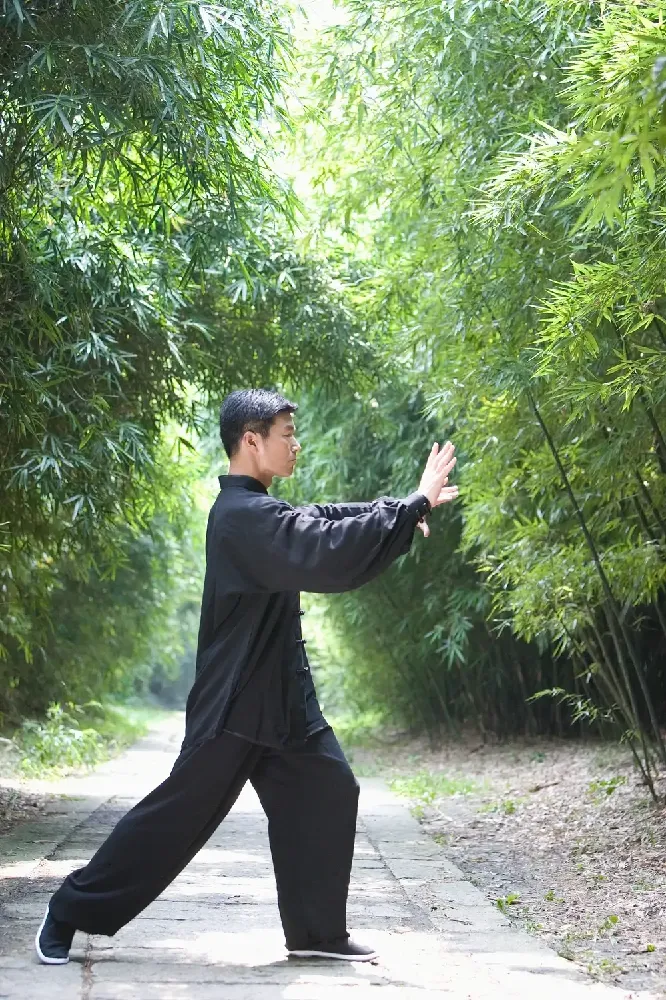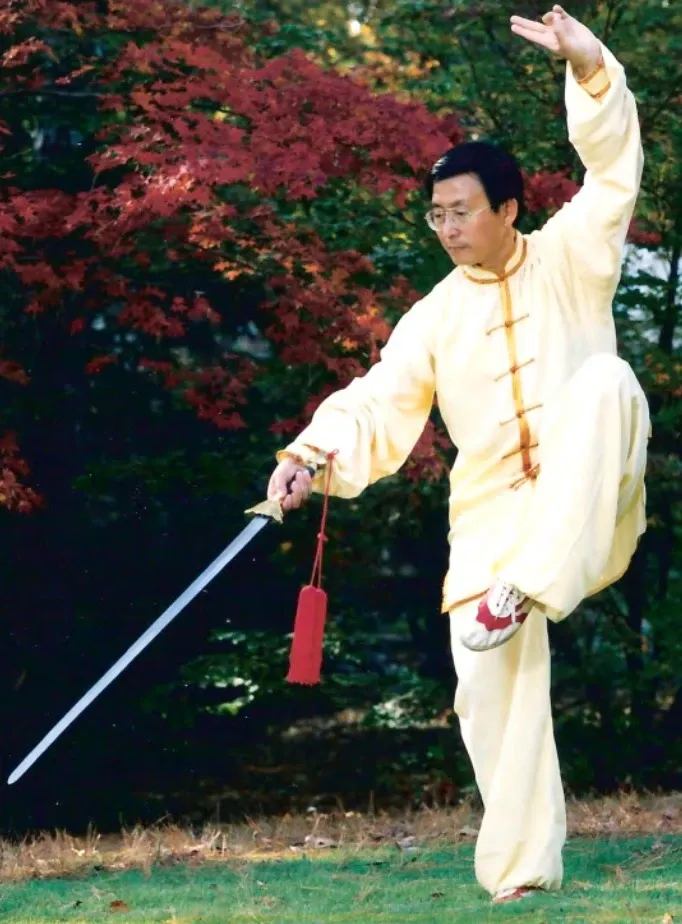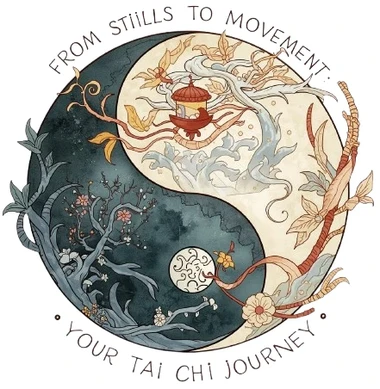When people around the world envision Tai Chi, they are most often picturing Yang Style Tai Chi. With its graceful, slow-motion movements, upright posture, and accessible nature, it has become the most popular and widely practiced form of this ancient Chinese internal martial art.
From parks at dawn to community centers and online YouTube tutorials, its flowing sequences are a symbol of serenity, health, and cultural wisdom. But what is the story behind this gentle art?
How does one begin to learn it, and what makes it uniquely beneficial?
This article delves into the history, principles, and practice of Yang Style Tai Chi Chuan, offering a comprehensive guide for beginners and seasoned practitioners alike.

The Historical Legacy — From Chen Village to the Forbidden City
The story of Yang Style Tai Chi begins with its legendary founder, Yang Luchan (1799-1872), in the early 19th century.
A determined young man from Yongnian County in Hebei province, Yang Luchan's journey to becoming the "Yang Unbeatable" is a tale of perseverance.
As the story goes, Yang worked for the Chen family in Chenjiagou, the birthplace of Tai Chi. Fascinated by the martial art practiced by the family patriarch Chen Changxing, he secretly observed and practiced the forms at night.
This legend, immortalized in the novel "Stealing the Fist," highlights his dedication. Upon discovering him, Chen Changxing was so impressed by Yang's skill and commitment that he broke tradition and accepted him as a formal disciple.
After 18 years of rigorous training, Yang Luchan returned to Yongnian and later traveled to Beijing. There, he was introduced to the Manchu imperial court and aristocracy. His clients, however, were often pampered nobles unused to physical hardship.
To suit their needs, Yang Luchan made a revolutionary adaptation. He removed the more physically demanding aspects of the Chen style—such as vigorous leaps, stomps, and explosive fa jin movements—creating a slower, more upright, and gentle framework.
This new form emphasized continuous, soft, and large movements, making it ideal for health maintenance and accessible to a wider audience. This was the genesis of the Yang method of Tai Chi.
His sons, Yang Banhou and Yang Jianhou, and later his grandson, the great Yang Chengfu (1883-1936), further refined and standardized the style. Yang Chengfu is credited with finalizing the "Large Frame" that is the direct ancestor of the Yang Style Tai Chi practiced globally today.
Defining the Art — What is Yang-Style Tai Chi?
What is the Yang method of Tai Chi? At its core, it is an internal martial art that integrates mind, body, and spirit through a series of choreographed movements. It is characterized by its emphasis on relaxation, balance, and the smooth flow of Qi (vital energy).
Core Principles: The Ten Essential Requirements
Yang Chengfu codified the style's essence in his "Ten Essential Principles," which serve as the foundation for all practice:
- Suspend the Head Top with Lightness and Sensitivity: Keeping the head erect as if suspended from above.
- Sink the Chest and Raise the Back: Allowing for natural, deep breathing.
- Relax the Waist: The waist is the commander of all movement.
- Distinguish Substantial and Insubstantial: Clear weight distribution is key to stability and agility.
- Sink the Shoulders and Drop the Elbows: Releasing tension in the upper body.
- Use Mind, Not Muscle: Movement is directed by intention (Yi) rather than brute force.
- Coordinate the Upper and Lower Body: Achieving whole-body integration.
- Unify the Internal and External: Harmonizing intention, energy, and physical form.
- Maintain Continuous, Unbroken Flow: Movements are connected like a flowing river.
- Seek Tranquility in Movement: Cultivating a calm mind even while the body is in motion.
Technical Characteristics
- Large, Expanded Frame (Da Jia): The postures are open, spacious, and graceful.
- Softness and Slowness: Movements are performed slowly and evenly, promoting deep relaxation and body awareness. This is a primary reason it is often considered the best Tai Chi style for seniors.
- Lightness and Agility: The steps are light and controlled, "like a cat walking."
- Upright and Centered Posture: The body remains vertically aligned, promoting structural integrity.
Health Benefits: The Best Tai Chi for Seniors?
The gentle nature of Yang Style Tai Chi makes it exceptionally well-suited for older adults and absolute beginners. Its proven benefits include:
- Improved balance and coordination, reducing the risk of falls.
- Enhanced flexibility and joint health.
- Reduced stress and anxiety.
- Lowered blood pressure and improved cardiovascular health.
- Increased lower-body strength and overall mind-body connection.

The System — Forms, Movements, and Weapons
A common question for those looking to start is, "How many moves are there in Yang-style tai chi?" The answer is layered, as the system contains several forms of varying length and complexity.
- Traditional Long Form (85/108 Movements): This is the core curriculum. The 108-movement form (often taught as an 85-movement form by Yang Chengfu) is the comprehensive, traditional practice that takes 20-30 minutes to complete. Many seek a Yang Style Tai Chi 108 movements PDF to study this sequence.
- The Simplified Forms: For modern promotion, shorter forms were created. The 24-Step Simplified Form, derived from Yang Chengfu's frame, is the most popular Tai Chi for beginners worldwide and is the standard introductory form taught in many classes you might find when searching "Yang style Tai Chi near me."
- Other Frameworks: The system also includes a Medium Frame, Small Frame, and Fast Frame, which are typically taught after mastering the foundational Large Frame.
Weapons and Partner Work
Beyond the empty-hand forms, the system includes:
- Tai Chi Sword (Jian): Known for its elegance and precision.
- Tai Chi Saber (Dao): A more robust and powerful form.
- Tai Chi Push Hands (Tui Shou): A two-person practice that teaches the martial applications of the form, sensitivity, and balance.
Chen vs. Yang — Understanding the Key Differences
What is the difference between Chen and Yang-style tai chi? While Yang style originated from Chen, they have distinct characteristics. Chen Style vs. Yang Style Tai Chi: A Clear Guide to Choosing Your Path.
| Feature | Chen Style Tai Chi | Yang Style Tai Chi |
|---|---|---|
| Origins | The original style from Chenjiagou. | Adapted from Chen style by Yang Luchan. |
| Appearance | Lower stances; alternates between slow, soft movements and fast, explosive power (fa jin). | Upright, higher stances; consistently slow, soft, and even-paced. |
| Movements | Contains spiraling, "silk-reeling" energy, jumps, and stomps. | Gentle, large, and expansive; no obvious fa jin or jumps. |
| Primary Focus | Martial application and health. | Health, meditation, and accessible exercise; martial application is more subtle. |
| Best For | Those seeking a more physically demanding and martially oriented practice. | Beginners, seniors, and those primarily focused on health and stress relief. |
Learning Yang-Style Tai Chi — A Step-by-Step Guide for Beginners
Embarking on your Yang Style Tai Chi journey can be simple.
- Find a Qualified Instructor: The best way to learn is with a teacher. Search for "Yang style Tai Chi near me" to find local classes. A good instructor will correct your posture and ensure you learn safely.
- Start with the Basics: Most classes will begin with the 24-Step form. Don't rush. Focus on learning the sequence correctly before worrying about deep internal principles. A Yang Style Tai Chi step-by-step PDF can be a useful supplemental reference.
- Practice Consistently: Even 15-20 minutes daily is more beneficial than one long session per week.
- Utilize Online Resources: For those without access to a local class, the internet is a valuable tool. Searching "Best YouTube Yang Tai Chi for beginners" will yield excellent channels with step-by-step tutorials. Look for instructors with a clear lineage and a focus on correct alignment.
Inheritance and the Future — From National to UNESCO Heritage
The legacy of the Yang family is profound. After Yang Chengfu, masters like Cheng Man-ch'ing and Fu Zhongwen helped spread the art across the globe.
In 2006, Yang Style Tai Chi was listed as a National Intangible Cultural Heritage in China. This recognition was elevated to a global level in 2020 when "Taijiquan," encompassing all major styles, was inscribed on the UNESCO Representative List of the Intangible Cultural Heritage of Humanity.
This official status ensures the protection and promotion of this cultural treasure for generations to come.
Conclusion: The Enduring Gift of Yang-Style Tai Chi
Yang Style Tai Chi is more than a sequence of movements; it is a moving meditation, a holistic health practice, and a living link to Chinese philosophical thought. From its humble beginnings in the Chen family courtyard to its status as a global wellness practice, its journey mirrors its own core principle: gentle persistence overcomes all obstacles. Whether you are a senior seeking better balance, a beginner looking to reduce stress, or a martial artist exploring internal power, the graceful, flowing movements of Yang Style Tai Chi Chuan offer a path to greater harmony, resilience, and peace.
Frequently Asked Questions About Yang Style Tai Chi
What is the Yang method of Tai Chi?
The Yang method of Tai Chi is the most popular and widely practiced style globally. It is characterized by its slow, gentle, and flowing movements, a large and open frame, and an upright posture. Developed by Yang Luchan in the 19th century, it emphasizes relaxation, balance, and mindfulness, making it exceptionally accessible for health improvement and stress relief.
What is the difference between Chen and Yang-style Tai Chi?
The primary difference between Chen and Yang-style Tai Chi lies in their appearance and intensity. Chen Style, the original form, incorporates explosive power, fast-slow transitions, low stances, and spiraling energy. In contrast, Yang Style is consistently slow, soft, and even-paced, with higher stances and no obvious bursts of power, making it more suitable for beginners and seniors.
What is the best Tai Chi style for seniors?
Yang Style Tai Chi is widely considered the best Tai Chi style for seniors. Its gentle, upright, and slow-motion movements are low-impact and place minimal stress on joints. The practice significantly improves balance, leg strength, and mental calmness, directly addressing key concerns for older adults, such as fall prevention and arthritis management.
How many moves are there in Yang-style Tai Chi?
The number of moves varies by form. The traditional Yang Style Tai Chi long form has 108 movements, often condensed into an 85-movement sequence. For modern practice, simplified forms are common, most notably the 24-Step Yang Style form, which is the standard starting point for beginners. Other forms include the 40-step and 48-step competition routines.
Where can I find 'Yang style Tai Chi near me'?
To find "Yang style Tai Chi near me," search for local community centers, senior centers, martial arts schools (Kung Fu/Wushu), and yoga studios. You can also check the websites of major Tai Chi associations, which often have instructor directories. For a flexible start, many high-quality Yang Style Tai Chi YouTube channels offer excellent step-by-step instruction for home practice.
How can I learn Yang Style Tai Chi for beginners?
The best way to learn Yang Style Tai Chi for beginners is to start with the 24-Step simplified form. Look for a local class or a reputable online instructor on YouTube (search "Best youtube Yang Tai Chi for beginners"). A good step-by-step approach focuses first on learning the correct sequence of postures before delving into the deeper internal principles. Supplementary Yang Style Tai Chi step-by-step PDF guides can also be helpful for reference.
What are the key characteristics of Yang Style Tai Chi Chuan?
Yang Style Tai Chi Chuan is defined by several key characteristics: its large and expansive frame, where movements are open and graceful; slowness and even pace throughout the form; softness and apparent ease; upright and central body alignment; and continuous, flowing motion without any abrupt stops. The martial applications are deeply hidden within the soft, defensive movements.
Are there any good Yang Style Tai Chi 108 movements PDF guides online?
Yes, you can find Yang Style Tai Chi 108 movements PDF guides online through Tai Chi forums, association websites, and digital libraries. These documents often provide written descriptions and diagrams of the complete traditional sequence. However, for correct learning, it is highly recommended to use these PDFs as a supplement to video instruction or in-person classes to ensure proper form and alignment.
